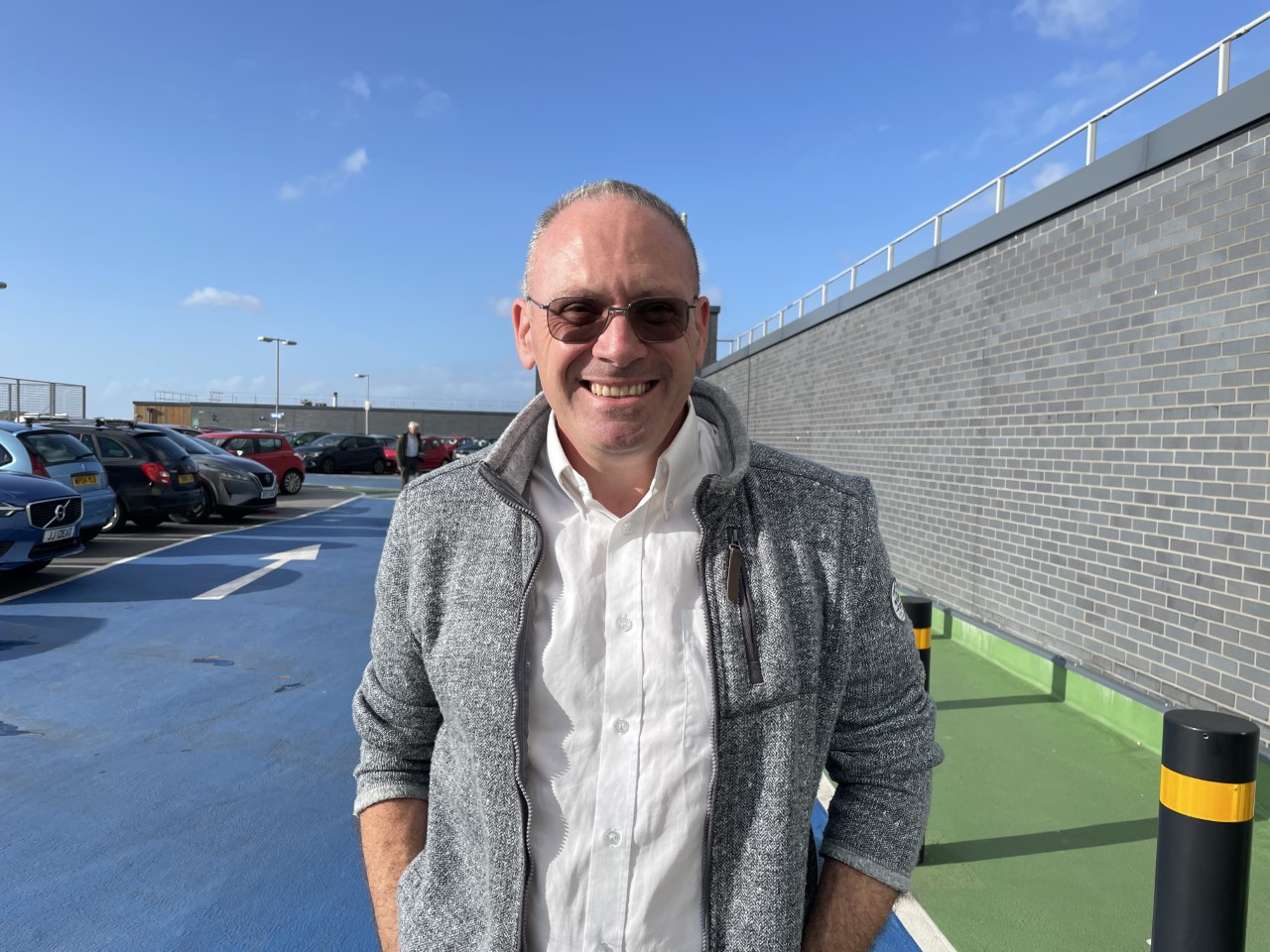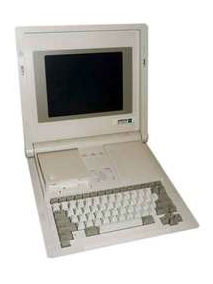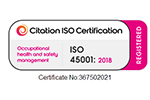Our longest serving employee on the past, present and future of BEMS
Last month, I caught up with one of Kendra’s founding fathers and longest serving employee, Paul. Having spent almost his whole working life in building controls, Paul has seen a striking industry transformation over the course of his career.
Sat down over a Teams call, Paul showed me what his 1990’s ‘laptop’ looked like, explained the origin of Kendra’s name and revealed why, after so many years, the BEMS industry still makes him ‘tick’.
Here’s what our Southwest Operations Manager had to say.

Let’s start right at the beginning. How did you become a BEMS engineer?
The BEMS industry found me – I didn’t find it! I think that’s the case for many people.
I was at college studying electronics. Then one day a Swiss-based process control and metering company, Landis+Gyr, came in and asked if any of us would like to try HVAC controls. I said OK. The rest is history. I joined as an entry level controls engineer.
“The job still makes me tick. Every day is different, which keeps things interesting. If I was to sit in an office at a desk 9-5 it would drive me insane”
Is there a particular reason you wanted to get into BEMS?
I come from Bristol, which was big on aviation at that time. Everyone else seemed to be going into the aviation industry, but I wanted to try something different. When the opportunity to join the building controls industry arose, I thought ‘why not?’
Initially, I went to college once a week while doing my apprenticeship to study building services. After that, I spent a couple of years going on week-long courses to learn controls and subsequently products at North Acton.
As you went straight into BEMS from college, did you ever have the opportunity to try anything else?
Yes, I tried a few other bits while I was at college. This might sound awful, but I once worked at a company that refurbished TVs and videos and didn’t like it because I thought ‘anyone can be trained to do this’. I felt as though I wasn’t utilising my skillset.
I also got a role in motor windings – big pumps in fans – but I didn’t get on with that either. I even tried working in my dad’s building company but being a builder didn’t appeal.
I was just dabbling really until the right opportunity came along. The only thing I did enjoy, other than BEMS of course, was working for a small electrics company, building custom printed circuit boards.
You say you’ve always enjoyed working in BEMS. What do you enjoy most about your role?
The job still makes me tick. Every day is different, which keeps things interesting. If I was to sit in an office at a desk from 9-5 it would probably drive me insane.
It’s the people, the products and the varied workload that keeps me going. But mostly the people. I like the social side of the BEMS industry. Our customers are not just customers. They’re friends. You know them outside of work, too. It’s such a close-knit industry.
Want to join us? Check out our vacancies

Is there anything you find challenging about the building controls industry?
The challenging bit is getting good quality young people into the industry. Many young people haven’t heard of BEMS. It’s a shame because there’s a lot here for young people. It’s a progressive and rapidly evolving industry, after all.
To reach young people, manufacturers need to invest more in apprenticeships and fast track young engineers. The young engineer that we’re fast-tracking here at Kendra is fantastic. He’s really excelling.
“My wife, Karen, chose the name Kendra. It means ‘wives and knowledgeable’ in old English”
On a slightly different note – you were Kendra’s founding father, alongside Steve, in 1999. Why did you start Kendra?
Yes, I started Kendra in 1999. I worked for four BEMS companies beforehand, but looking back, none of them were truly the right fit.
I turned to Steve one day, who I worked with at the time, and told him that I’d like to ‘go it alone’ and start my own company. I said it in a ‘tongue-in-cheek’ kind of way without truly meaning it. However, Steve’s reply was ‘let’s do it’. And that’s the moment it all began.
Kendra was formed because we wanted to start a company that would fit around us and our lifestyles. We wanted a ‘people-based’ company, rather than a company that was solely profit based. That’s the ethos that Kendra was built around.
Why did you name the company Kendra?
My wife, Karen, chose the name Kendra. It means ‘wives and knowledgeable’ in old English. Karen was pregnant at the time and literally found it by flicking through a baby name book and looking at meanings whilst trying to decide on names for our baby.
We also wanted to add what the business does. As BEMS is about integration, we did look at names that centred around the theme of integration, but they were largely taken. We then looked at names that related to control services, but that could be mistaken for pest control, so we steered clear of that, too!
We then considered the fact that Kendra will ultimately be about problem solving – we find solutions to our customer’s problems. And that’s why it became Kendra Energy Solutions.
When did you pass the company over to Chris and Gary, Kendra’s current owners?
We sold to Chris and Gary in 2011. And honestly, we wouldn’t have sold it to anyone else. We knew them. We trusted them. And when they took Kendra on, they told us they would keep Kendra’s people-based values intact – which they have.
One factor that contributed to our decision to sell Kendra was the industry at the time. It was changing. Everything was going national – national contracts, central control, no local branches. The industry has always gone like that though; from national to regional, then back again.
Our children were also getting older and we wanted more family time, which also influenced our decision. We don’t regret anything, though. When we look back at everything we’ve done, we wouldn’t change a thing.
“Everyone is talking about smart buildings, but I don’t think anyone truly knows what a smart building is yet”
You mention a change in the BMS industry. How do you think the industry has changed over the course of your career?
When I started in the industry, BEMS were stand-alone controllers. They were almost like production line controllers that were being adapted to be BEMS. It didn’t work.
They then moved on to dedicated BMS controllers. During this period, I used the first ever ‘laptop’ of my time. I believe it was called a ‘Zenith twin drive’. It had two great big floppy drives – one was an operating system, one was BMS software.
EDIT: View the Zenith Laptop Computer that Paul is describing here.

We’ve come a long way since then. As technology advanced, a BMS became an integrated part of a building, as opposed to a peripheral item that simply does heating and ventilation. Now it does lighting, CO2 and much more.
The focus of the industry has changed, too. It’s much more environmentally focused now.
We’ve spoken about the past and present of the BEMS industry, but looking forward, where do you think the industry is headed?
Everyone is talking about smart buildings, but I don’t think anyone truly knows what a smart building is yet. How far smart technology will go in the future is yet to be discovered.
It’s exciting that what we’re seeing now is just the tip of the iceberg. We know the direction we’re headed in, but not the extent of what can be achieved. There is no limit. We’re looking a blank piece of paper. And that’s why this industry is such an interesting place to be right now.
Last question – what’s your favourite thing about working at Kendra?
Kendra looks after its people. It’s great to see young people progress and develop within the organisation, moving in whatever direction they chose. And you feel supported here, from both a work perspective and a personal perspective. It’s more than just a job. It’s a family.
Any questions? Get in touch









